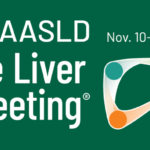Editor’s Note:
Hepatocellular carcinoma (HCC) is one of the most common malignant tumors in China. In recent years, with the continuous improvement of diagnosis and treatment, the misdiagnosis rate and mortality of early-stage HCC have greatly decreased. However, many patients are already at an advanced stage when liver cancer is detected, making curative treatment impossible. For these inoperable HCC (uHCC) patients, how to maximize the rescue of the patient’s life remains a major challenge. The emergence of local treatments, targeted therapies, immunotherapies, and multidimensional combined treatments has promoted the transition of uHCC patients to earlier stages, enhancing their survival benefits. In 2022, the leading international journal, The Lancet Gastroenterology & Hepatology, published a single-arm Phase II clinical study called START-FIT by Dr. Zhiren Chen’s team from the University of Hong Kong, China. This study assessed the efficacy and safety of TACE, SBRT, and PD-L1 inhibitors in treating patients with locally advanced uHCC. At the 13th Asia-Pacific Primary Liver Cancer Expert Meeting (APPLE 2023), the team presented the latest 3-year follow-up data from the START-FIT trial, garnering widespread attention. This report provides a comprehensive overview.

Transarterial chemoembolization (TACE) and systemic drug treatments are widely used for locally advanced uHCC patients. However, their efficacy is limited, especially for larger tumors (>5 cm) or those with multiple nodules. In recent years, with the advancement of stereotactic body radiation therapy (SBRT), combining SBRT with TACE has brought significant clinical benefits to uHCC patients, improving local response rates, achieving better anti-tumor reactions, and without increasing toxicity. Previous research indicates that local treatments can modify the tumor microenvironment and enhance the response to immune checkpoint inhibitors. Combining SBRT with PD-1 inhibitors can achieve durable tumor control outside the radiation field, with a complete response rate of up to 50%.
START-FIT is a single-arm, multi-center, researcher-initiated Phase II clinical trial. It included 33 uHCC patients, enrolled between March 18, 2019, and January 27, 2021, all aged 18 or older, and without lymph node or extrahepatic metastasis. 21 cases (64%) were in the Barcelona liver cancer stage (BCLC) C stage with major vascular invasion. The median total tumor diameter was 15.1 cm.
Patients enrolled in the study received TACE treatment on the first day, followed by SBRT treatment of 27.5-40.0 Gy (administered over 5 sessions) on the 28th day. 14 days after the SBRT, they were treated with avelumab (10 mg/kg, once every two weeks, for a maximum of 12 cycles). The primary endpoint of the study was the percentage of patients suitable for curative treatment after conversion therapy, which was defined as those who maintained either a complete or partial remission for at least two months and could undergo curative treatments such as tumor resection, radiofrequency ablation, or liver transplantation.
In an article published in 2022, the median follow-up duration for the study was 17.2 months. The median progression-free survival (PFS) for patients was 20.7 months, and the median overall survival (OS) was 30.3 months. The control rate for local lesions was 92% at both 12 and 24 months. The PFS rates for patients were 52% and 38%, respectively, and the OS rates were 72% and 69%. The 24-month OS rate for the 18 patients suitable for curative treatment was 94%. Among them, the 24-month OS rate for the 14 patients who achieved a complete response and chose close monitoring was 92%, while the rate was 100% for the 4 patients who underwent curative treatment. These data suggest that the combination of local treatment and immunotherapy is a promising strategy for conversion therapy.
At the APPLE 2023 conference, Professor Chen Zhiren’s team released the latest 3-year follow-up data from the START-FIT trial and conducted a post-hoc analysis on the relationship between the objective response rate (ORR) based on the modified Response Evaluation Criteria in Solid Tumors (mRECIST) and OS.
Data as of March 22, 2023, revealed that a total of 15 surviving patients had been followed up for an average of 34.9 months (IQR, 30.8~43.4 months). The results indicated that for the entire cohort, the 3-year OS rate was 49% (95%CI: 31%~67%). The confirmed ORR was 67% (95%CI: 48%~82%), with complete responses (CR) at 42%, partial responses (PR) at 24%, stable disease (SD) at 9%, and progressive disease (PD) at 24%. Specifically, the 3-year OS rates for patients who achieved CR, PR, and SD+PD were 86% (95%CI: 67%~100%), 50% (95%CI: 15%~85%), and 10% (95%CI: 0~29%) respectively (P<0.001). Multivariate analysis revealed that the radiological response as per mRECIST was an independent predictor of OS (HR=2.6, 95%CI: 1.5~6.5, P=0.004).

In conclusion, the START-FIT trial of TACE, SBRT, and PD-L1 inhibitor sequential treatment offers significant clinical benefits for locally advanced uHCC patients. The long-term follow-up results indicate an ORR of up to 67%, with a 3-year OS rate of 86% for those achieving CR. This treatment strategy provides a high rate of conversion and complete remission, promising safety, and may offer a curative opportunity for these patients, greatly enhancing their long-term survival prospects.


